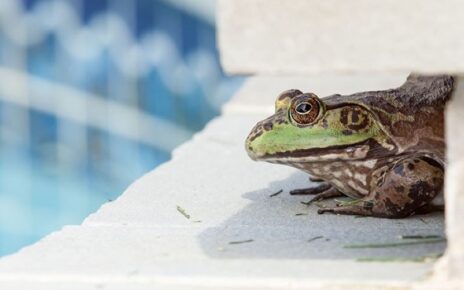Indoor plants-The plants besides being beneficial to clean the environment in our homes are a fantastic tool to give a fresh and cozy touch to them. However, it is not always easy to guess and choose the most suitable plant for a certain corner.
Each plant sets its conditions; not all plants can adapt to life inside, nor do they all require the same care. If you are one of those who have no luck with plants, maybe it is because you do not choose the most appropriate one. Give yourself a new opportunity with one of these 6 indoor plants easy to grow.
With the following six plants, it’s easy to get it right. All of them are good options to grow them inside our houses and all of them stand out for being very easy to care for. Most of you will have seen them at your parents’ house or your grandparents, I’m sure!
Top 6 easy indoor plants

Aspidistra
If there is something that characterizes the aspidistra and the difference of the rest of plants of this selection is its reduced demand for light. A feature that allows us to place it in pots in halls and corridors where other plants would not resist. We will always choose dark places for it, since too much direct sun could yellow the leaves and cause rickets.
You may like also: Lineart tips
They are very slow growing indoor plants so our recommendation is that you buy a plant with a bearing according to that corner you want to decorate with it. It requires few waterings, being able to leave it long seasons without watering without the plant being affected. However, it is advisable to water it when the substrate dries on the surface during the spring and summer, reducing the risks in winter, when we will let the substrate dry completely.
During the spring, when the new shoots come out new shoots, it is convenient to add fertilizer to the irrigation water , which will help to develop larger leaves. During this time also, you can take it outside on a rainy day, so that its leaves get rid of dust. You can also clean your leaves by spraying with warm water and then passing a cloth soaked with beer.
Ribbon
The tapes are present in almost all the houses of the grandmothers, for something will be. De porte pendant and bright we can find them with different nuances, still leaves fringed varieties with the most popular, but also require more light.
Although the ribbon appreciates the light, it should not receive direct sunlight to prevent its leaves from burning. They endure in almost any location, from the sunniest to the most shaded, but their ideal location will be close to a window with curtains.
If you are looking for a plant to give a green touch to the bathroom or kitchen , this is your plant, love the humidity! It is advisable to spray the tapes from time to time during warm periods. They must also be watered frequently at this time of the year, reducing it in winter. In order to improve the development of the plant, it is also advisable to fertilize the belt every fifteen days in the spring and summer seasons with liquid fertilizer in the irrigation water.
Dracena marginata
The thin leaf dracena is ideal to add an exotic touch to any corner of the house. As it grows, it loses the lower leaves, leaving behind a thin stem that usually arches creating very decorative effects. However, be careful if you have pets because their leaves can be toxic to both dogs and cats.
It supports virtually all light conditions, but you have to pay attention to your risks. The secret of this plant is not to water it excessively, only when the soil has completely dried up we will water it copiously until it moistens all the soil in the pot.
Another factor to take into account for proper maintenance, is that the dracena does not withstand low temperatures . Below 14 ° C the plant suffers; Its optimal development has it with high temperatures, between 22 and 26 ºC. If the temperatures are high and the environment is too dry, it is recommended to spray it with some frequency or the tips of the leaves will be removed.
Ficus Benjamina
The Ficus Benjamina is a classic in our homes. Why? Because with very little care and attention we achieved a striking green corner at home. Varieties that have leaves stained white or yellow, need more light and need to be placed next to a window. The rest, tolerate low levels of light.
It also tolerates low levels of humidity. During spring and summer it is advisable to water it when the substratum has almost dried and provide it with water every 15 days. In the rest periods, however, it is advisable to extend the risks.
To keep it leafy, it should be removed every 2 or 3 months (never in winter), cutting the last 2 or 3 leaves of each terminal branch. And do not be scared if when you take him home he loses leaves, it usually happens until he gets acclimated. Another reason may be the lack of light look for a site that you like!
Photos (Epipremnum aureum)
The potus or photos is one of the most grateful indoor plants. Not only does it not require almost care, it can even survive only with water. Put a stem with one of the ends inside a container with water. And you will see how, little by little, it is developing roots and growing as if nothing.
That if you need a bright place but no direct sun, to develop properly. In low light, it loses the yellow color of the variegated leaves. As for temperature, the ideal is to keep it between 15 and 20º C; below 10ºC it can lose its leaves.
Regarding irrigation, it is necessary to let the land dry between irrigation and irrigation. Too frequent watering will cause yellowing and subsequent loss of leaves. It is always better to stay short, than to go, as it happens in most cases.
Sansevieria or Tongue of Tiger
The Sansevieria, popularly known as mother tongue for its long and sharp leaves, is a plant that survives in extreme conditions. And decorates all kinds of environments. It develops best near a light source and in a small pot, rather than in a large, loose one.
It is a very slow development plant that annually creates only three or four new leaves. Their care is almost nil. It requires very few risks; in fact the biggest enemy of this plant is the excess water that causes the root of the base. In winter, it is not necessary to water it more than once or twice.




